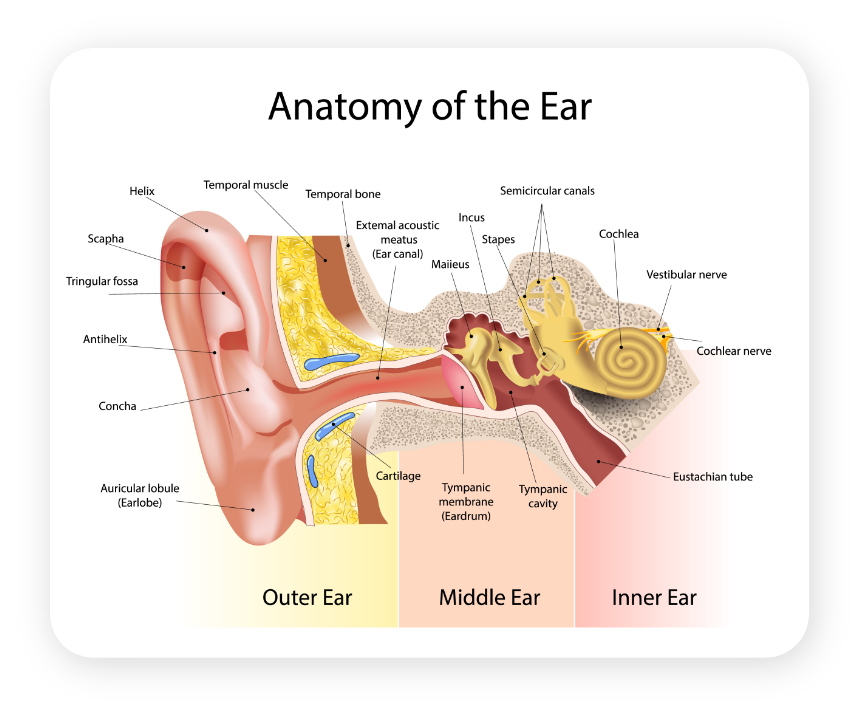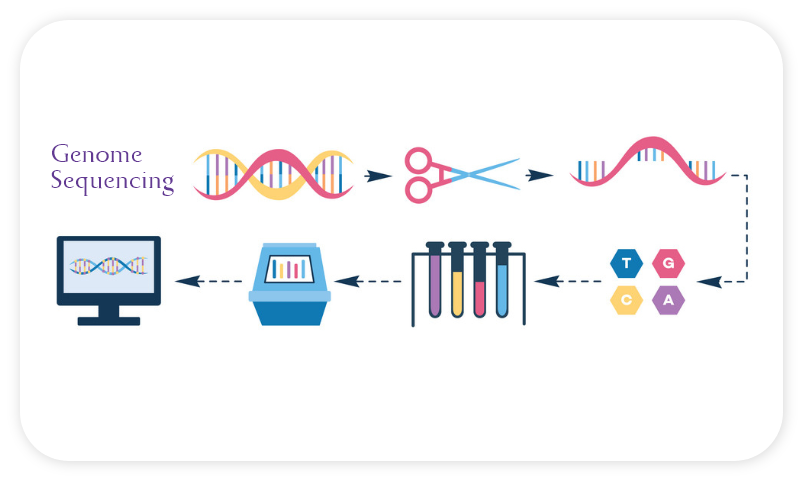Congenital Hearing Loss: Common Causes, Diagnosis, Treatment
Did you know babies start to perceive sounds while they are in the womb? After birth, a baby’s hearing develops while observing the faces of loved ones and hearing sounds around them. Gradually, they even start imitating such sounds. But what if your baby doesn’t get startled or wakes up to loud noises, or does not respond to your voice by smiling or with mumblings? Could this mean your baby suffers from hearing loss?
A child’s potential to develop speech is highly related to the ability to hear. If a baby is born with hearing impairment or develops it at an early age, there is a high chance of the cause being congenital (genetic change or mutation at birth). A study states, every year, approximately three of every 1,000 babies suffer from hearing loss1.
So, does hearing loss run in the family? Yes, it does. And a majority (approx. 70%) of congenital hearing loss are non-syndromic (without any signs and symptoms)2. On the other hand, 30% of the mutation is syndromic. Most children with genetic hearing loss do not show any other birth-defects. However, some mutations can cause defects in the heart, vision, or growth.
Since genes play an important role in congenital hearing loss, an early diagnosis could be the key to find treatments and secure your baby’s future.
Common Genetic Disorders That Cause Congenital Hearing Loss!
According to the experts, a majority of inherited hearing loss is the outcome of a child inheriting the mutated copy of the gene from both parents.
Alport syndrome
A genetic disorder characterized by progressive hearing loss (which is caused by abnormalities of the inner ear), kidney disease, and defects in eyes.

Goldenhar’s syndrome
A rare genetic disorder that can result in a child having vision loss, hearing loss, or deafblindness. The patients with goldenhar syndrome suffer from congenital aural atresia i.e. a missing ear canal which results in conductive hearing loss.
Waardenburg syndrome
A group of genetic conditions that can cause hearing loss, pigmentation of hair, skin, and iris. The degree of hearing loss can be unilateral or bilateral (one or both ears).
Crouzon syndrome
People with crouzon syndrome may have dental problems, malformations in the external ear or the middle ear or both.
Treacher Collins syndrome
The symptoms of TCS can be mild or severe. There are cases where the symptoms in a parent are mild and hard to notice. However, when the mutation is passed to the next generation, the child shows more symptoms. Furthermore, about 30%- 50% of the affected children have severe conductive hearing loss as a result of TCS.
Down syndrome
Infants with Down’s syndrome are more likely to have congenital permanent inner ear hearing loss. A study report suggests 38-78% of all hearing loss in children is due to Down syndrome3.
Congenital Hearing Loss Diagnosis
Hearing loss can be detected using physical techniques and response to a sound stimulus. Yet, it is tough to detect in newborns; hence, leading to a delay in treatment. However, newborn sequencing technology can detect the genes commonly associated with hearing loss, and help doctors in making a prompt diagnosis.
Newborn Sequencing by Definition

The newborn sequencing implies the DNA sequencing technology to determine the changes or mutations in our DNA or gene which can affect your newborn’s normal life. It is an important part of neonatal care (for children under 24 months) by detecting the diseases at a much quicker rate to ensure rapid and efficient further diagnostic and therapeutic initiation.
Genome-Scope is a DNA-based test for newborns that uses next-generation sequencing technology to analyze 1500+genes related to childhood onset disorder. The test is simple.

Congenital Hearing Loss Treatments
The treatment for congenital hearing loss starts before the child turns 6 months old. Following factors are considered before starting the treatment:
- Age
- Behavior and personality
- The development level of the child
- Level of the hearing loss
After the analysis, your doctor may recommend ear tubes, hearing aid, medicines, including antibiotics or surgery for the treatment. The HL diagnosis is not a one-time process. Your baby needs the complete HL testing after newborn sequencing along with the pre and post test counselling from experts. The treatment progress should be reviewed from time to time.
Words From LifeCell
While you may be focusing on the child suffering from congenital hearing loss, it is high time for you to think about your entire family. Hearing loss can be found in a newborn with or without any family history. Some families may have many affected individuals while others may have only one child with HL. Therefore, a diagnosis is necessary to determine the right approach and medical assistance for the cure of HL or any genetic abnormalities.
How to Book Your Appointment?
For more questions and queries, book your appointment with our genetic
counsellors at 1800 266 5533. We are just One Call Away!
Interested to read more blogs related to neonatal care, genetic screening, or cord blood banking? Yes!! Visit our website: https://www.lifecell.in/
References:
1. https://www.marchofdimes.org/complications/hearing-loss-and-your-baby.aspx2. https://www.hiddenhearing.co.uk/hearing-information/hearing-loss/congenital-hearing-loss

